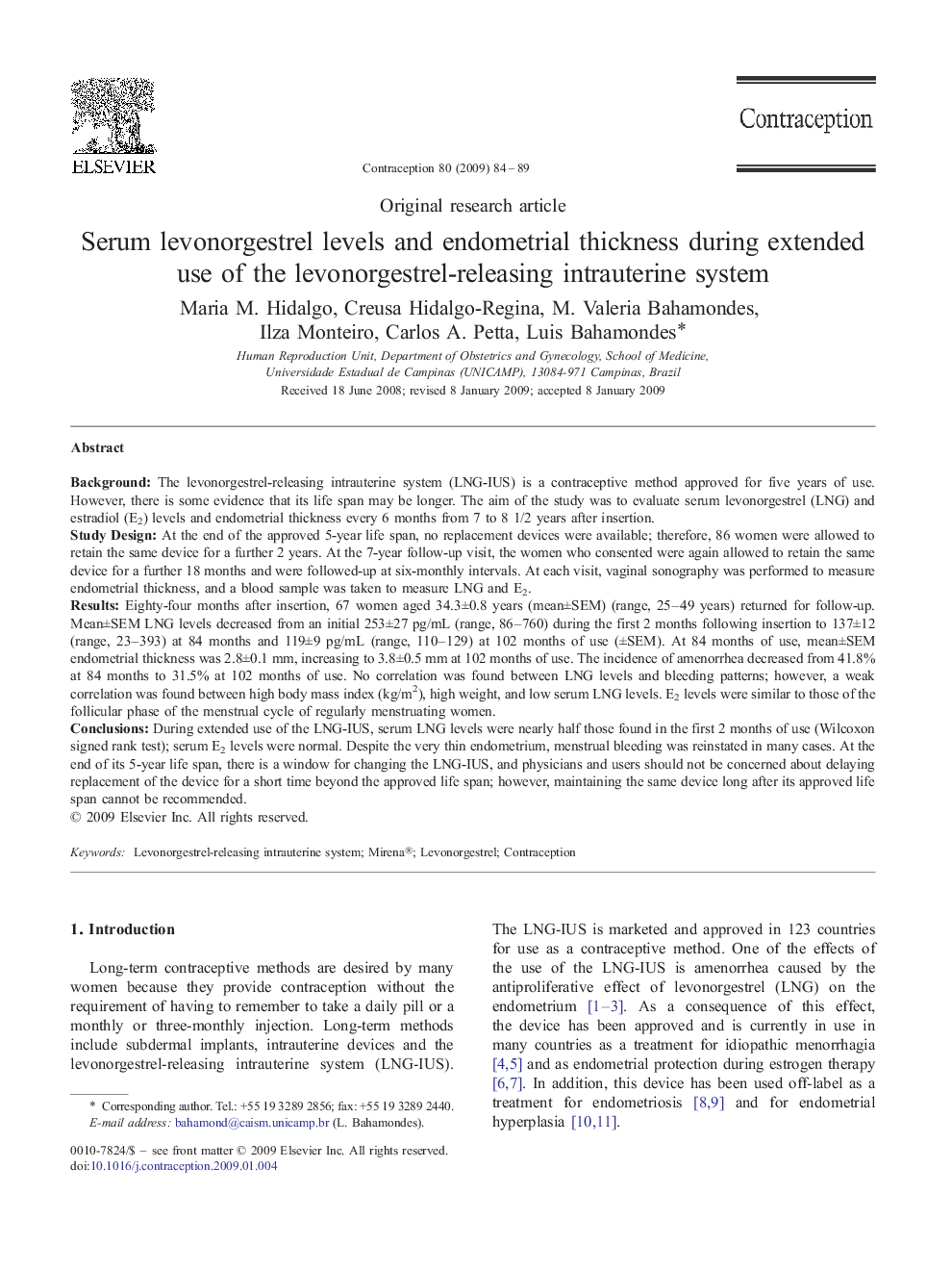| Article ID | Journal | Published Year | Pages | File Type |
|---|---|---|---|---|
| 3914493 | Contraception | 2009 | 6 Pages |
BackgroundThe levonorgestrel-releasing intrauterine system (LNG-IUS) is a contraceptive method approved for five years of use. However, there is some evidence that its life span may be longer. The aim of the study was to evaluate serum levonorgestrel (LNG) and estradiol (E2) levels and endometrial thickness every 6 months from 7 to 8 1/2 years after insertion.Study DesignAt the end of the approved 5-year life span, no replacement devices were available; therefore, 86 women were allowed to retain the same device for a further 2 years. At the 7-year follow-up visit, the women who consented were again allowed to retain the same device for a further 18 months and were followed-up at six-monthly intervals. At each visit, vaginal sonography was performed to measure endometrial thickness, and a blood sample was taken to measure LNG and E2.ResultsEighty-four months after insertion, 67 women aged 34.3±0.8 years (mean±SEM) (range, 25–49 years) returned for follow-up. Mean±SEM LNG levels decreased from an initial 253±27 pg/mL (range, 86–760) during the first 2 months following insertion to 137±12 (range, 23–393) at 84 months and 119±9 pg/mL (range, 110–129) at 102 months of use (±SEM). At 84 months of use, mean±SEM endometrial thickness was 2.8±0.1 mm, increasing to 3.8±0.5 mm at 102 months of use. The incidence of amenorrhea decreased from 41.8% at 84 months to 31.5% at 102 months of use. No correlation was found between LNG levels and bleeding patterns; however, a weak correlation was found between high body mass index (kg/m2), high weight, and low serum LNG levels. E2 levels were similar to those of the follicular phase of the menstrual cycle of regularly menstruating women.ConclusionsDuring extended use of the LNG-IUS, serum LNG levels were nearly half those found in the first 2 months of use (Wilcoxon signed rank test); serum E2 levels were normal. Despite the very thin endometrium, menstrual bleeding was reinstated in many cases. At the end of its 5-year life span, there is a window for changing the LNG-IUS, and physicians and users should not be concerned about delaying replacement of the device for a short time beyond the approved life span; however, maintaining the same device long after its approved life span cannot be recommended.
